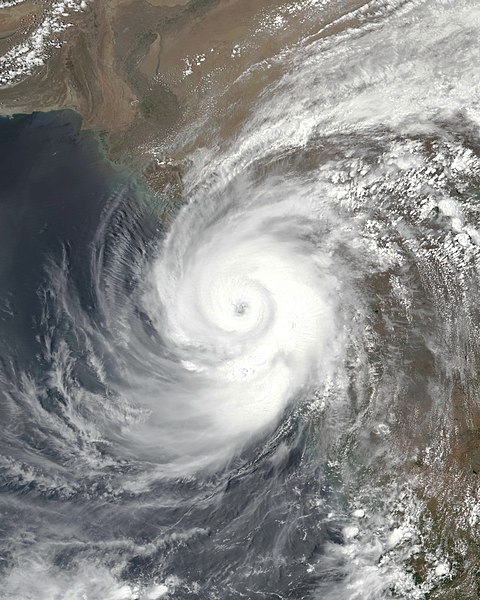
The cyclone season has just got unleashed in India. While India is yet to recover from Cyclone Tauktae, which has caused havoc on the west coast and killed more than 100 people, Cyclone Yaas is set to hit the east coast this week.
Early estimates project the loss due to Cyclone Tauktae at Rs 15,000 crore or about $2 billion, at least half from Gujarat and Daman & Diu, and the rest from Kerala, Maharashtra, Goa and Karnataka. The estimates include up to 40% loss from agriculture, up to 20% each from transportation, and power and telecom, according to RMSI, a risk management consultancy. It would take some time before the final figures about the loss of life and property are arrived at. Tropical cyclones like Tauktae are fast rotating storms marked by strong winds and thunderstorms, leading to heavy rains.
Last year’s severe tropical cyclones, too, inflicted heavy damage in the country. Severe cyclonic storm Nivar hit Andhra Pradesh, Puducherry and Tamil Nadu in November 2020, costing an estimated $600 million; severe cyclonic storm Nisarga cost an estimated $803 million in Goa, Gujarat and Maharashtra in June 2020; and super tropical cyclone Amphan caused an estimated loss of Rs $14 billion in Odisha and West Bengal in May 2020. While cyclone Amphan claimed about 100 lives, the number of displaced people stood at 2.4 million people in India, mostly in West Bengal and Odisha, according to the State of the Global Climate for 2020, a report from World Meteorological Organization (WMO).
In 2019, India was amongst the top 10 climate change affected countries in the world, at seventh position. Eight tropical cyclones hit the country, including Cyclone Fani, which impacted about 28 million people and cost $8.1 billion, according to Global Climate Risk Index 2021 brought out by Germanwatch, an environmental think tank.
Usually, the cyclones season in India is from April through November with the east coast more vulnerable than the west coast. About 5,770 km out of 7516 km of India’s coastline is at risk from natural hazards like cyclones.
The standard cyclone disaster management includes mitigation measures like hazard mapping to make predictions based on previous experience; land use planning to avoid settlements and activities in vulnerable areas; construction of cyclone shelters; flood management, and enhancing vegetation cover, mangrove plantation and embankment. Awareness creation amongst local communities at high risk is also called for. UN-Habitat, which is dedicated to promoting transformative change in cities and human settlements, has elaborated on each measure.
India has quite a few agencies on the ground working on various aspects of disaster management. For example, the National Disaster Response Force (NDRF) is a specialised agency engaged in rescue operations in emergency situations. NDRF also scores highly on the benchmarks of the Sendai Framework for Disaster Risk Reduction, which has set targets and priorities on undertaking actions for risk reduction.
Since the focus is on loss prevention as much as post-emergency relief, India’s apex body for disaster management, National Disaster Management Agency (NDMA), has launched National Cyclone Risk Mitigation Project (NCRMP) to undertake suitable measures to reduce the impact of cyclones in collaboration with coastal states, Union Territories and the National Institute for Disaster Management (NIDM), which is engaged in training and capacity building for natural disaster management. The focus of NCRMP is on improving early warning systems, building disaster management capacity of local communities and improving access to emergency measures.
Under NRCRMP, NDMA has been also working with India Meteorological Department (IMD) to develop a Web-based Dynamic Composite Risk Atlas (Web-DCRA) to help reduce losses to life and property due to cyclones. IMD has been appreciated for its work by even the World Meteorological Organisation (WMO) for its accurate predictions.
Now, the attention is also being given to creating resilient infrastructure, which not only survives disasters, but also remains functional during emergencies.
Hosted by India, the Coalition for Disaster Resilient Infrastructure (CDRI), comprising countries, United Nations (UN), banks, private sector and research agencies, is focusing on resilience of infrastructure through capacity building, partnerships, and research and knowledge management. CDRI also works towards achievement of UN Sustainable Development Goals (SDGs), particularly SDG 9 on building resilient infrastructure, which have been set for making the world a better place for all by 2030.
There is a business case, too, for investing in disaster resilient infrastructure. It is estimated that investment in more resilient infrastructure would have a net benefit of $4.2 trillion in low and middle income countries. Each dollar invested is estimated to benefit $4, according to Lifelines: The Resilient Infrastructure Opportunity, a report of the World Bank and the Global Facility for Disaster Reduction and Recovery (GFDRR).
Speaking at a recent global conference organised online by CDRI, Prime Minister Narendra Modi emphasized: “Countries that are making large investments in infrastructure, such as India, must ensure that this is an investment in resilience, and not in risk…. The notion of ‘resilient infrastructure’ must become a mass movement galvanising the energies of not just the experts.”
Modi could not have been more spot on. Investment in disaster resilient infrastructure is the pivot for risk reduction in loss of life and property as global warming continues to cause increase in the incidence as well as severity of extreme weather events.
Source: The Times of India
Published on 24 May 2021
